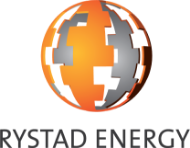
Energy top stories to 28/7/22. OPEC daily basket price stood at $108.11/bl, 27 July 2022
Libya to load oil for export, ending a force majeure on key oilfields and ports that had been in place since April. Libya now expects to double crude output to 1.2 million bpd
Mitsubishi Heavy Industries Environmental & Chemical Engineering Co., Ltd. (MHIEC), a part of Mitsubishi Heavy Industries (MHI) Group, has received the “Ministry of Economy, Trade and Industry (METI) Minister’s Award” at the 48th Outstanding Environmental Systems Awards, hosted by The Japan Society of Industrial Machinery Manufacturers (JSIM), for its newly developed stoker-type waste incinerator(1). The “METI Minister’s Award,” the highest award presented by JSIM, cited the incinerator’s innovative V-shaped structure and low loss on ignition(2). An awards ceremony was held at the Kikai Shinko Kaikan building (Minato-ku, Tokyo) on July 26. Read More
During the period from July 18 to July 22, 2022, Eni acquired n. 4,045,462 shares, at a weighted average price per share equal to 11.0865 euro, for a total consideration of 44,849,967.60 euro within the authorization to purchase treasury shares approved at Eni’s Shareholders’ Meeting on 11 May 2022, previously subject to disclosure pursuant to art. 144-bis of Consob Regulation 11971/1999.
On the basis of the information provided by the intermediary appointed to make the purchases, the following are details of transactions for the purchase of treasury shares on the Euronext Milan on a daily basis: Read More–>
Infineon Technologies AG is launching a solution on the market that can be used to open and close locks via the mobile phone – without any batteries in the lock. The application gets the power it needs contactlessly from the mobile phone. This is also referred to as energy harvesting.
“Infineon is paving the way with the new solution for doing away with keys,” says Adam White, Division President Power & Sensor Systems at Infineon. “By dispensing with batteries, we are providing, for the first time, a reliable, low-maintenance and secure way of opening and closing smart locks.”
Infineon says that it will also put the solution for contactless energy transfer to use in other applications. “Our solution for contactless use of energy saves resources due to the lack of batteries. In addition, it will enable new applications in which the use of batteries was previously too complex or too cost-intensive,” says White. One example is to measure parameters that are difficult to access, like a NFC passive tire pressure sensor for bicycles.
To activate the lock, the mobile phone must be held directly on it. Near-field communication (NFC) is used to check whether the device is also actually authorized to open the lock. This is where encryption technology comes in. At the same time, energy is transferred contactlessly to a capacitor that opens or closes the lock.
The core of the solution is the programmable 32-bit ARM® Cortex®-M0 microcontroller with a built-in NFC frontend. With integrated power generation and a H-bridge, the NAC1080 enables customers to launch miniaturized smart locks on the market with very few components. The NAC1080 has an additional integrated AES128 accelerator and a true random number generator to allow data encryption and decryption with extremely low power consumption.
The Infineon technology is especially suitable for locks that require little mechanical effort, such as in office furniture, hospitals and fitness studios. Other possible applications are bicycle locks, mailboxes and parcel boxes. The solution thus provides greater convenience and flexibility, while at the same time cutting the costs for key management in private and commercial properties.
The new solution from Infineon can, however, also be used in complex locking systems such as front doors. It steps in as an emergency solution when batteries in standard smart locks are out of power, or when keys are lost. Although the response time for more complex door locks is longer, it does dispense with having to rely on an expensive locksmith service.
The market for smart locks is booming. It was valued in 2020 at $1.4 billion, and is expected to grow from 2021 to 2028, at an average annual rate of 18.2 percent, to $5.3 billion. This growth will gain even more momentum through the use of battery-free devices. Read More

Infineon Technologies AG (FSE: IFX / OTCQX: IFNNY) is launching the new XENSIV™ PAS CO2 Shield2Go board, which is suitable for both air quality monitoring and demand-controlled ventilation for energy savings.
The new board is part of the Infineon Shield2Go portfolio featuring sensors, microcontrollers and security ICs that can be freely combined as part of an integrated prototyping concept. The XENSIV PAS CO2 Shield2Go board comes with a DCDC boost converter that supplies the sensor with the required 12 V power supply. That way a 5 V supply, for instance via USB provided by a microcontroller board, is sufficient and allows prototyping without the need for an external 12 V power supply.
Furthermore, the board is equipped with an Infineon IC and comes with a ready-to-use Arduino library – as do all boards in the portfolio. Adapters from Shield2Go to the common prototyping form factors Arduino Uno and Raspberry PIs 40-pin interface are also available to support quick start-up. Moreover, all boards come equipped with solderless connectors, allowing designers to stack the boards instead of soldering them.
Infineon’s XENSIV PAS CO2 sensor used for the board has a very small form factor. The device offers high accuracy as well as robust performance in the ppm range (±30ppm; ± 3 percent of reading) fulfilling most stringent air quality regulations & standards. In addition, the sensor has advanced algorithms for compensation and self-calibration. It also features UART, I 2C, and PWM interfaces, as well as various configuration options for e.g. sampling rate and baseline calibration. Read More

Golar LNG Limited (“Golar”) announces today that Perenco Cameroon S.A. (“Perenco”) and Société Nationale des Hydrocarbures (“SNH”), together the customer of FLNG Hilli (“Hilli”), have elected to exercise 0.2 million tons per annum (“MTPA”) of their optional Dutch Title Transfer Facility (“TTF”) linked production volumes from 2023 to July 2026, continuing Hilli’s 2022 production volume of 1.4 million tons per annum.
The tariff for the 0.2 MTPA from January 2023 to July 2026 is linked to TTF gas prices. Based on current average 2023 TTF gas prices ($45.49/MMBtu) the 0.2 MTPA of production can generate US$135 million of incremental annual Adjusted EBITDA to Golar. For each US$1.00/MMBtu change in TTF, this Adjusted EBITDA will increase (or decrease) by US$3.2million. The total value of the 0.2 MTPA production from 2023 until July 2026 is approximately $267 million in Adjusted EBITDA to Golar based on current TTF forward prices. Hence Hilli will continue with three components to its Adjusted EBITDA generation; a fixed tariff, a Brent oil linked tariff, and a TTF gas price linked tariff. At current forward prices for 2023, Golar’s share of annual distributable Hilli Adjusted EBITDA is expected to be approximately $286 million (fixed tariff of $65 million, Brent oil linked earnings of $86 million, and TTF linked earnings of approximately $135 million). Golar’s share of total annual debt service for Hilli’s contractual debt is approximately $50 million (debt amortization of approximately $29 million and interest of approximately $21 million). Hilli is therefore expected to generate significant free cash flow to equity for the reminder of the fixed contract. Golar may enter into hedging transactions to reduce the sensitivity of the commodity linked components of Hilli’s future earnings, as we have done in 2022. Read More

GE (NYSE:GE) announced results today for the second quarter ending June 30, 2022.Total orders $18.7B, +2%; organic orders +4%
• Total revenues (GAAP) $18.6B, +2%; adjusted revenues* $17.9B, +5.0% organically*
• Profit margin (GAAP) of (1.3)%, +440 bps; adjusted profit margin* 9.3%, +380 bps organically*
• Continuing EPS (GAAP) of $(0.59), $(0.02); adjusted EPS* $0.78, +$0.56
• Cash from Operating Activities (GAAP) $0.5B, +$0.9B; free cash flow* $0.2B, $(0.0)B, ex. disc. factoring* +$0.0B
GE Chairman and CEO and GE Aerospace CEO H. Lawrence Culp, Jr. said, “The GE team delivered a strong second
quarter with growth in orders, revenue, and profit, as well as positive free cash flow. Aerospace was a key driver of
our performance this quarter as the industry recovery builds momentum. In higher-margin services, GE delivered
double-digit revenue growth, with Aerospace up 47 percent compared to last year.” More
World’s recoverable oil now seen 9% slimmer; commercial volumes can keep global warming below 1.8˚C. This year’s review of global recoverable oil resources is based on resources modelled at well level rather than field level. This more detailed approach has removed 178 billion barrels from the expected accounts as the confidence level for decline rates has increased with the amount of new information gathered.
Our updated report also includes revisions for proved reserves. Here Rystad Energy applies a consistent set of conservative probabilities, as opposed to official reporting by authorities which is deemed less consistent. Among other findings, we see significant differences among OPEC members on the longevity of proved reserves, ranging from well below 10 years for some members to almost 20 years for Saudi Arabia and the UAE. Read More

Guyanese offshore oil and gas industry goes from strength to strength, powered by the Stabroek block, government revenue from domestic production is on track to break the $1 billion mark this year and accelerate to $7.5 billion annually in 2030, according to Rystad Energy research. This year is set to be a turning point for the Georgetown government to start capitalizing on the vast reserves in the offshore field, with revenues more than doubling over 2021 levels.
Low breakevens and below-average emissions intensity in the Stabroek will propel Guyana from a relatively small producer to a global leader in the coming years, solidifying the country’s position as a competitive and policy-friendly player for offshore production.
The government’s take* from the production is expected to increase until 2025, reaching $4.2 billion annually. Triggered by a forecasted drop in oil prices and continued spending on the field’s development, government revenues will fall to $2.4 billion in 2027. Still, production growth is set to accelerate, with revenue momentum resuming as new pre-Final Investment Decision (FID) projects are sanctioned and brought online, leading to peak government revenues of $16 billion in 2036. These projections do not factor in as-yet undiscovered resources. Read More
The impact of the new EU taxonomy – the system that classifies which investments are sustainable – is likely to support the growth of nuclear power in some countries but bringing new gas online within the defined emissions limit of 270g CO2e/kWh limit may be unrealistic, according to Rystad Energy research.
The challenge for gas is twofold: abatement technologies are not yet market-ready at scale and their costs, once implemented are likely to boost prices further. The resulting spike in production costs suggests that even existing gas power plants could become economically unviable, according to our research. Hydrogen blending and carbon capture and storage (CCS) are the primary options for gas emissions reductions with the latter unlikely to be a viable option before the mid-2030s. Rystad Energy’s research also shows a 800,000 tonnes potential gap in hydrogen production targets between REPowerEU, an earlier initiative aimed at increasing energy security, and what is implicit in the taxonomy. This discrepancy mightmake hydrogen blending for power generation a challenge.
For natural gas, the EU taxonomy sets out strict guidelines for any new power plant, clarifying that projects should replace an existing solid or liquid fossil fuel power plant, without exceeding the preexisting capacity by more than 15%. In practice, this means that if a gas power plant would take a minimum of four years to build, the earliest replacement of a coal power plant in the EU would be in 2026. Rystad Energy expects 44.6 gigawatts (GW) of coal capacity to shut down in the region between 2026 and 2031 – which could be replaced by a maximum of 51.3 GW of new gas power capacity.
For nuclear, a gradual phaseout towards 2040 is expected, but unlike gas, its emissions are negligible and new plants have no requirement to replace coal capacity under the taxonomy, instead, being only required to adhere to safety and waste disposal standards. Read More

| Oil and Gas Blends | Units | Oil Price $ | change |
| Crude Oil (WTI) | USD/bbl | $98.87 | Up |
| Crude Oil (Brent) | USD/bbl | $107.94 | Up |
| Bonny Light | USD/bbl | $118.06 | Down |
| Saharan Blend | USD/bbl | $117.77 | — |
| Natural Gas | USD/MMBtu | $8.55 | Down |
| OPEC basket 27/07/22 | USD/bbl | $108.11 | Down |
Cheniere Energy Partners, L.P. declared (i) a cash distribution of $1.06 per common unit to unitholders of record as of August 4, 2022, comprised of a base amount equal to $0.775 and a variable amount equal to $0.285, and (ii) the related distribution to its general partner. These distributions are payable on August 12, 2022.
This press release serves as qualified notice to nominees as provided for under Treasury Regulation Section 1.1446-4(b)(4) and (d). Please note that 100 percent of Cheniere Partners’ distributions to foreign investors are attributable to income that is effectively connected with a United States trade or business. Accordingly, all of Cheniere Partners’ distributions to foreign investors are subject to federal income tax withholding at the highest applicable effective tax rate. Nominees are treated as withholding agents responsible for withholding distributions received by them on behalf of foreign investors. Read More

Cheniere Energy, Inc. announced that its Board of Directors has declared a quarterly cash dividend of $0.33 per common share payable on August 16, 2022 to shareholders of record as of the close of business on August 9, 2022. Read More
Cheniere Energy, Inc. announced that its wholly-owned subsidiary, Corpus Christi Liquefaction, LLC (“CCL”) has entered into a long-term liquefied natural gas (“LNG”) sale and purchase agreement (“SPA”) with PTT Global LNG Company Limited (“PTTGL”), a wholly-owned subsidiary of PTT Public Company Limited (“PTT”), Thailand’s largest state-owned, multinational energy company.
Under the SPA, PTTGL has agreed to purchase 1.0 million tonnes per annum (“mtpa”) of LNG from CCL for twenty years beginning in 2026. The SPA calls for a combination of free-on-board (FOB) and delivered ex-ship (DES) deliveries. This customized structure represents a further evolution in Cheniere’s commercial offerings tailored to the specific needs of LNG customers around the world. The purchase price for LNG under the SPA is indexed to the Henry Hub price, plus a fixed liquefaction fee. Read More

Hess Reports Estimated Results for the Second Quarter of 2022.Hess Corporation (NYSE: HES) today reported net income of $667 million, or $2.15 per common share, in the second quarter of 2022, compared with a net loss of $73 million, or $0.24 per common share, in the second quarter of 2021. On an adjusted basis, the Corporation had net income of $74 million, or $0.24 per common share, in the second quarter of 2021. The improvement in after-tax earnings compared with the prior-year quarter adjusted results was primarily due to higher realized selling prices in the second quarter of 2022. Second Quarter Financial and Operational Highlights:
Net income was $667 million, or $2.15 per common share, compared with a net loss of $73 million, or $0.24 per common share, in the second quarter of 2021; Adjusted net income1 in the second quarter of 2021 was $74 million, or $0.24 per common share
Oil and gas net production, excluding Libya, was 303,000 barrels of oil equivalent per day (boepd); Bakken net production was 140,000 boepd
E&P capital and exploratory expenditures were $622 million compared with $429 million in the prior-year quarter
Cash and cash equivalents, excluding Midstream, were $2.16 billion at June 30, 2022 Read More

New Solar Initiatives to Lower Electricity Bills and Create Clean Energy Jobs
Bipartisan Infrastructure Law Funding Will Support Solar Energy Careers in Underserved Areas; New Digital Platform Will Make Reliable Solar Power More Accessible
WASHINGTON, D.C.—The Biden-Harris Administration, through the U.S. Department of Energy (DOE), today launched new initiatives to connect families to more reliable clean energy, lower electricity bills, and create good-paying jobs in the domestic solar industry. DOE, in collaboration with the U.S. Department of Health & Human Services (HHS), announced the five states and Washington, D.C. that will support the pilot of the Community Solar Subscription Platform to connect families to solar energy and lower electricity bills through the Low-Income Home Energy Assistance Program (LIHEAP) and other low-income assistance programs. DOE also announced $10 million from President Biden’s Bipartisan Infrastructure Law to jump-start solar energy careers in underserved communities. Today’s announcements support President Biden’s goal to reach a carbon-free electricity sector by 2035 while creating good-paying jobs across the country. Read More

U.S. Rig Count is up 2 from last week to 758 with oil rigs unchanged at 599, gas rigs up 2 to 155 and miscellaneous rigs unchanged at 4. Canada Rig Count is up 4 from last week to 195, with oil rigs down 1 to 124, gas rigs up 5 to 71.
| Region | Period | Rig Count | Change from Prior |
| U.S.A | 22 July 2022 | 758 | +2 |
| Canada | 22 July 2022 | 195 | +4 |
| International | June 2022 | 824 | +7 |
The U.S. Department of Energy (DOE) today announced $3 million in funding for 10 high-performance computing projects that will advance cutting-edge manufacturing and clean energy technologies. As part of the High-Performance Computing for Energy Innovation (HPC4EI) initiative, the selected projects will leverage the expertise and computing capabilities of the U.S. National Laboratories to improve manufacturing efficiency and explore new materials for clean energy application through state-of-the-art modeling, simulation, and data analysis.
“The HPC4EI program helps researchers and manufacturers harness the raw power of high-performance computing to address some of the most complex challenges in manufacturing and material advancement,” said Kelly Speakes-Backman, Principal Deputy Assistant Secretary for Energy Efficiency and Renewable Energy. “These projects will improve performance, reduce emissions, and increase the efficiency of clean energy technologies and manufacturing processes, accelerating our transition to a clean energy economy.” Read More
UK households could see their energy bills hit £500 for a single month by next year as Putin’s latest gas supply cuts drive up prices across Europe, analysts have warned.
A new report from BFY Group predicts that the energy price cap will rise to £3,420 at the next increase in October before surging to £3,850 in the first quarter of 2023.
That means average bills for January alone are likely to be above £500.
The predictions are even more bleak than recent analysis from Cornwall Insight, which said the energy price cap will hit £3,363 for the first quarter. Read More

Africa Oil Corp. regrets to announce the death of the Company’s founding shareholder and inspirational leader behind the Company, Mr. Lukas H. Lundin, in Geneva, Switzerland on 26 July 2022 at the age of 64, following a two-year battle with brain cancer. View PDF version
Over the past 40 years, Lukas Lundin was the driving force behind the tremendous success of the Lundin Group of Companies. Lukas started his career in the international energy and mining sectors in the early 1980s working side-by-side with his father, the late Adolf H. Lundin.
Under the leadership of Lukas and his brother Ian, and in close cooperation with the rest of the Lundin family, the Lundin Group of Companies has grown into an internationally recognized group of energy and mining companies with operations around the globe, employing more than 15,000 people and creating opportunities for tens of thousands more.
The eleven companies that make up the Lundin Group of Companies today have a combined market capitalization exceeding USD $11 billion.
Lukas Lundin founded Africa Oil Corp in 2007 by transforming a former group company, Canmex Minerals Corporation, into an East African oil exploration vehicle. Following some major discoveries in Northern Kenya, the company has grown into a large, highly successful full cycle company with production in Nigeria and development and exploration projects throughout Africa. Read More
OilandGasPress Energy Newsbites and Analysis Roundup |Compiled by: OGP Staff, Segun Cole @oilandgaspress.
Disclaimer: News articles reported on OilAndGasPress are a reflection of what is published in the media. OilAndGasPress is not in a position to verify the accuracy of daily news articles. The materials provided are for informational and educational purposes only and are not intended to provide tax, legal, or investment advice.
Please email us your industry related news for publication info@OilAndGasPress.com
Follow us: @OilAndGasPress on Twitter |

Oil and gas press covers, Energy, Climate, Renewable, Wind, Biomass, Sustainability, Oil Price, LPG, Solar, Marine, Aviation, Fuel, Hydrogen, Electric ,EV, Gas, News and Analysis


